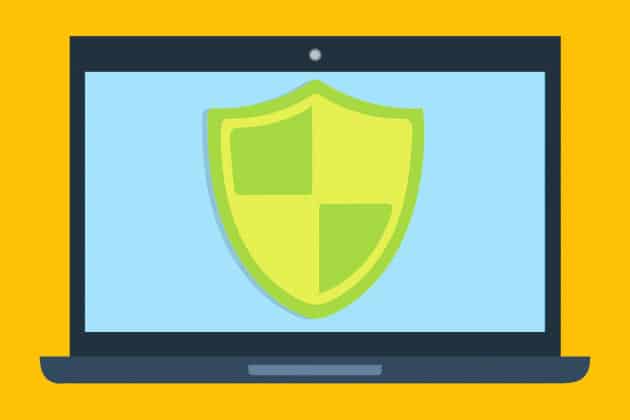Endpoint security secures end-user device entry points or endpoints from exploitation by campaigns or malicious actors. As cybersecurity threats continue to increase and become more sophisticated, the need for cutting-edge endpoint security solutions rises. Today’s protection systems are meant to block, analyze, detect, and contain in-progress attacks. Data is a business’s most valuable asset. Losing that data or access could put your business at insolvency risk, making endpoint protection security a crucial aspect of enterprise cybersecurity.
Hackers are constantly developing new means to access, steal data or manipulate staff into divulging sensitive information. Setting up an endpoint protection platform can help you detect cybersecurity threats quickly. Discussed below are twelve types of endpoint security.
1. Extended Detection and Response (XDR) security

XDR is a threat detection and response approach providing comprehensive protection against unauthorized access, cyberattacks, and misuse. It demolishes traditional security silos to ensure detection and response in all data sources. XDR is a cloud-native system established on big data infrastructure to offer security teams scalability, flexibility, and automation opportunities.
XDR security helps cybersecurity teams quickly and proactively detect hidden, sophisticated, and stealthy threats, track threats from any location or source within an organization, boost the productivity of the persons handling the technology, and ensure more efficient investigations. This can be very beneficial as it blocks unknown and known threats with endpoint protection, gives visibility across all data, automatically detects sophisticated attacks round the clock, prevents alert fatigue, shuts down advanced threats, and restores hosts after compromises.
Recommended for you: 5 Most Promising IoT Business Trends to Follow in 2022.
2. URL filtering

URL filtering solution compares web traffic against a filtering database to deny or permit access depending on the data. Every website interpreted in the database is allocated to a URL group or category that companies can use to allow/ block traffic depending on the URL category or match traffic according to the URL category for specific policy enforcement.
Deploying a wholly integrated URL filtering allows companies to enable safe web usage, reduce malware attacks, use whitelists, blacklists, database customizations, and custom categories to customize web filtering controls, and ease threat inspection and complete visibility of SSL-decryption policies into opaque traffic sites.

3. Endpoint detection and response (EDR) security

Also called endpoint threat detection and response (ETDR) EDR is an integrated solution combining real-time endpoint data collection and continuous monitoring with regulatory-based automated analysis capabilities and response. Primarily, an EDR security system monitors and collects activity data from threat-indicating endpoints analyzes the data to detect threat patterns, automatically responds to detected threats to contain or eliminate them, then alerts the security personnel.
EDR security offers an integrated center for the analysis, correlation, and collection of endpoint data and coordination notifications and responses to threats. These tools have essential components, including automated responses, endpoint data collection agents, and analysis and forensics.
4. Internet of Things (IoT) security

Internet of things security safeguards networks and devices connected to the Internet of Things. It ensures your IoT solution availability, confidentiality, and integrity. The Internet of Things experiences multiple security concerns, including vulnerabilities, malware, escalated cyber-attacks, information theft, unknown exposure, device management, and misconfiguration.
5. Browser isolation

Browser isolation safeguards users from untrustworthy, potentially malicious sites and apps by restricting browsing activity to a secure environment separate from organizational networks and user devices. This prevents malware infections and other cyber attacks from affecting internal networks and user devices. Browser isolation stops attacks aimed at the browser.
It deletes dangerous downloads, ensures that malicious scripts don’t execute in a private network or on a device, and blocks zero-day exploits via the browser. Browser isolation allows enterprises to block malicious web content without stopping an entire website. It can be remote, client-side, or on-premise.
6. Network access control (NAC)

Also known as network admission control, network access control is a method that bolsters a proprietary network’s visibility, security, and access management. It restricts network resource availability to endpoint users and devices that comply with a set security policy. The network access control also provides endpoint security protection, including antivirus software, vulnerability assessment, and a firewall with system authentication solutions and security enforcement policies.
NAC is vital in modern businesses, as it lets them authorize and revoke users or devices attempting to access the network. It controls network access, including restricting access to the devices and users that don’t adhere to security policies. NAC systems are proactive and meant to prevent unauthorized access before it occurs. They protect a company’s network perimeter, such as the devices, physical infrastructure, cloud-based assets, applications, and software.

7. Application control

The application control security system is meant to uniquely detect traffic from different applications on a network, enabling companies to define and use network routing and granular security policies depending on the particular traffic flow’s source. This prevents unauthorized applications from posing risks to your organization. Once traffic flow has been identified, it can be classified in type, security risk level, resource usage, and productivity implications.
8. Cloud perimeter security

A network perimeter is a boundary between the internet or other uncontrolled networks and a company’s secure internal network. Firewalls were developed to block malicious external network traffic to secure the perimeter. Thanks to the cloud, the network perimeter no longer exists.
Workers access applications and cloud data over unsecured internet and not the IT-controlled internal network. Poor cloud security can deny an organization the exclusive benefits of digital transformation — solid cloud security results in improved communication, protection against threats, more flexible architectures, and productivity.
You may like: 11 Things to Know Before Launching an eCommerce Business!
9. Sandboxing security

A sandbox environment offers a network security proactive layer to protect against new, advanced persistent threats that compromise enterprises and steal data. Sandboxes are designed to perform suspicious code safely without causing harm to the host network or device. When used for advanced malware detection, sandboxing adds another protection layer against new security threats, particularly stealthy attacks, and zero-day malware.
The sandbox implementation varieties include virtualization, whole system emulation, and emulation of operating systems. Consider applying sandbox evasion strategies, including sandbox detection, gaps, weakness exploitation, and content-aware trigger incorporation.

10. Endpoint encryption

Endpoint encryption utilizes encryption algorithms to safeguard files kept on an endpoint. This is a crucial aspect of an endpoint security strategy that secures this data against physical threats. An attacker can get physical access to devices with sensitive data in several ways, including stolen or lost devices, discarded devices, and evil maid attacks. A device’s physical access enables attackers to bypass various cybersecurity solutions.
Endpoint encryption ensures data security, malware defense, and regulatory compliance. Endpoint encryption makes it infeasible for attackers to access sensitive data or install malware. The Endpoint encryption systems differ depending on the level of encryption applied, including full-disc encryption and file encryption.
11. Email gateway

Email gateways are email servers that safeguard an organization’s internal email servers. They’re the servers through which all outgoing and incoming emails pass. Email gateways don’t host user email inboxes. Instead, they analyze and inspect all incoming emails before letting them into the user’s inbox. An enterprise doesn’t have control over the emails to be directed to its server. Nevertheless, upon reaching their server, they can decide whether to let them through or not.
At this point, email security, email gateway solutions, email filtering services, encryption email gateways, and email security gateways apply. These terms describe the measures applied to the servers to avoid external attacks and threats to mailboxes.
12. Antivirus

Antivirus is the most basic safeguard you can offer your endpoints. They’re installed directly on the endpoints to identify and eliminate malicious applications. Antivirus can detect familiar viruses detected by signatures or try to see new and potential malware with unfamiliar signatures by assessing its behavior. However, they can’t prevent zero-days or secure endpoints from network vulnerabilities.
Factors to Consider When Choosing Endpoint Protection Solutions

When picking an endpoint protection solution, ensure it doesn’t interfere with other systems, is reliable, and allows you to concentrate on your business. Here are the factors to consider when choosing endpoint protection solutions.
1. Detection rates

While you may want your security system to identify all the threats to your network, most malware evades detection. When looking at the detection rates, consider independent tests conducted by organizations with proven track records for informed, unbiased opinions.
2. Ease of maintenance and management

Choose an endpoint security solution that lets you manage all your endpoints, including servers, desktops, mobile devices, and virtual machines, from a central point, create the reports you require, push out updates, and automate repetitive tasks like developing and deploying configurations. Go for an option that manages IT security from the cloud as it’s easy and convenient. Managing your security solution from the cloud means you don’t need extra software or hardware.
3. Response and data recovery capability

Pick a reliable system that can eliminate all attack traces. It should recover data quickly while backing all the data automatically. The backup should be regular and more frequent for sensitive data.
4. Integration capacity

It’s essential to determine if the security solution you’re considering can seamlessly integrate with your company’s security architecture. You might face network and infrastructure-related concerns if it operates separately, resulting in security vulnerabilities. Choose an endpoint security tool that smoothly integrates with your whole security system.
You may also like: Social Media Best Practices for Small Businesses in 2022.
Endnote

Endpoint security protects your company data against threats and cyberattack costs. When choosing an endpoint security system, consider your business needs, including capacity, scalability, sector, budget, and company work policies.





